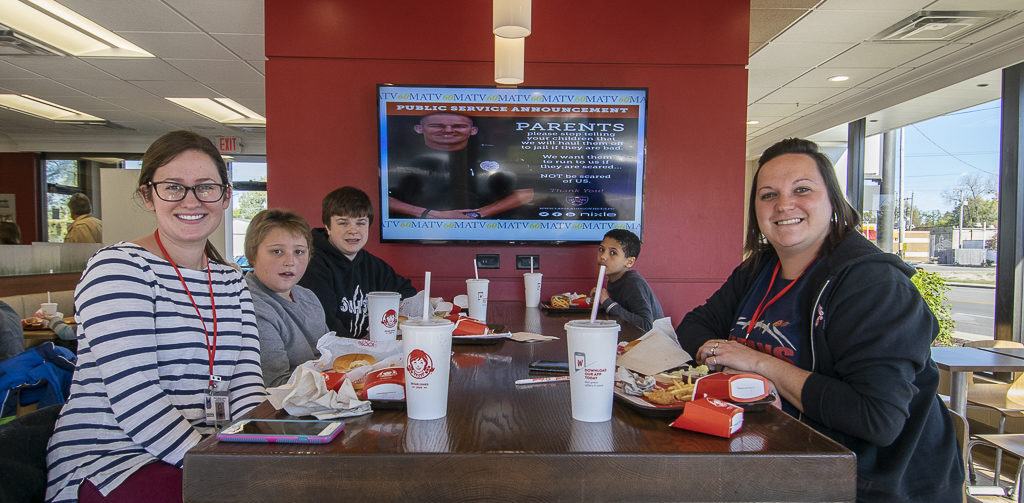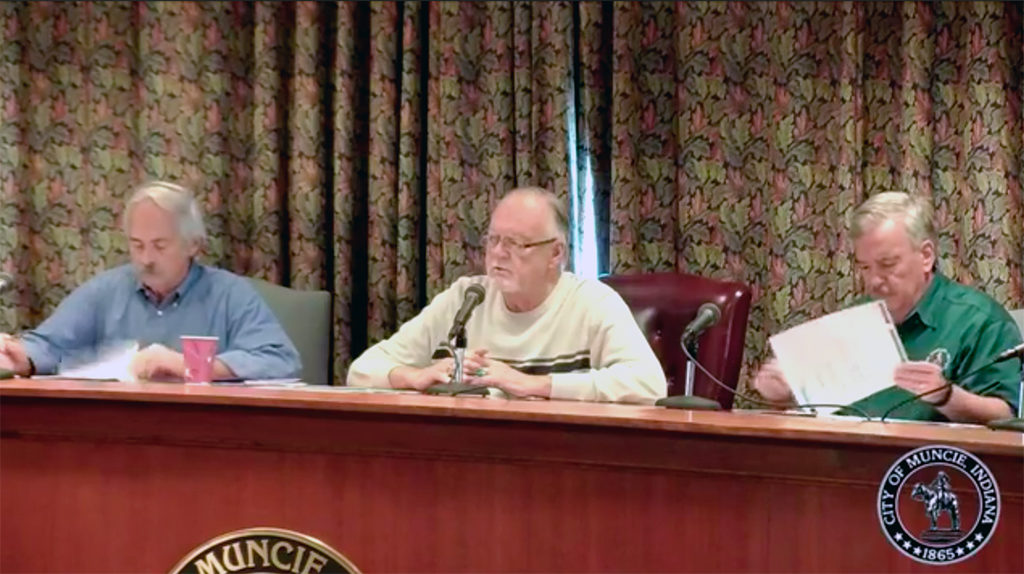By: Mike Rhodes—
Muncie, IN—Recently, the City of Muncie upgraded their video system equipment and brought it into the 21st century, in an effort to communicate more effectively with the public and make government meetings more transparent.
You’re probably familiar with the Greek philosopher quote, “the only thing constant in life is change,” but there’s seemingly nothing that changes as quickly as technology—and specifically new media technology. Video streaming and particularly live video streaming is a newer technology that has made its way into our homes, and onto our smart devices and computers. Its popularity and potential reach via social networks is undeniable.
Roger Overbey is media director for the City of Muncie, a position he’s held since 2012. Prior to that Overbey produced programs for the city under the Dan Canan administration for 10 years. He also manages the city public access channel and is co-administrator of the city Facebook page. “The equipment that was here before was old analog equipment that dated back to probably, I’m guessing, 1990-1991. S-VHS decks, analog cameras, things like that. So, that equipment was way outdated,” Overbey said.
Overbey discussed the equipment situation with Mayor Tyler and created a proposal that was presented to the Muncie Redevelopment Commission. Eventually, the proposal was approved and the new equipment was installed and configured in a small, windowed AV room inside the Muncie City Hall auditorium.
How the system works
The new equipment is a combination of computer servers branded Ultra-Nexis HD (high-definition), software and a switching device called a “tri-caster.” The Muncie City Hall auditorium is equipped with a number of remote controllable video cameras, strategically positioned within the auditorium. The new system allows the operator to direct and “switch the video signal” from one of those cameras to another during each meeting from the AV room, resulting in a professional multi-camera production that can be live video streamed straight to social media networks. The system is also used for meetings/productions that are broadcast on the city’s MATV public access channel available via Comcast. Overbey is currently working with AT&T in an attempt to get the public access channel on their cable system.
According to Overbey’s latest figures from Comcast, there are about 30,000 subscribers to cable TV in the Delaware County, Daleville, Farmland, Springport and Albany areas.

Teachers and students from Southside middle school are pictured enjoying lunch at Wendy’s on South Madison Street. The City of Muncie’s public access channel, MATV, is running on the flat-screen television on the wall. Photo by: Mike Rhodes
Overbey said,”If you don’t have cable, you can’t view our public access channel. Since most everyone has a phone, or computer, or iPad, whatever, we can put meetings out there live, and people can watch them live. They can watch meetings anytime via the City’s Facebook page. A lot of people can’t attend meetings they want to come to, because of their work schedules, but they’re interested in knowing what’s going on. Streaming those meetings live, unedited on the City’s Facebook page, allows the public to see exactly what’s going on.”
At the time of this writing, the city had over 8,000 followers of their Facebook page. A recent incident with graffiti at the reservoir resulted in over 168,000 views of a video recording of the mayor responding to the issue. Overbey says with social media the city can reach more people.
Streaming meetings live allows the public more transparency into local government. You can learn a lot about how meetings are run, what’s being discussed in a given meeting, and what kinds of comments are made at the public podium.
What meetings are covered?
Overbey says the following meetings are covered, broadcast and live streamed:
— Board of Works: Every Wednesday
— Parks Board Meeting: Third Tuesday of every other month
— Muncie City Council: 1st Monday of every month
— Muncie Sanitary District board meeting: Every other week

A screen shot of the live video stream from the Muncie Sanitary District board meeting, held on October 24, 2018.
Other uses for the new system have included recording training for the police department or special meetings the city may have.
Overbey says the new system is working out well.”From the feedback we’ve received, people seem to like it. They like being able to see what’s going on. They like that live stream; they’ve actually thanked us for doing it. They like the transparency of being able to see the meetings.”



